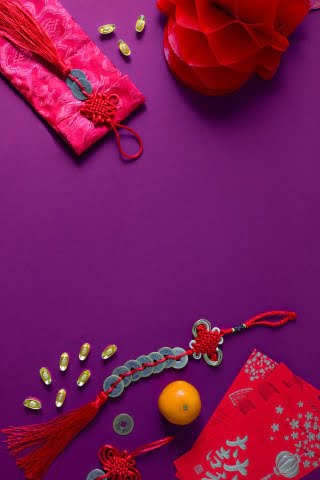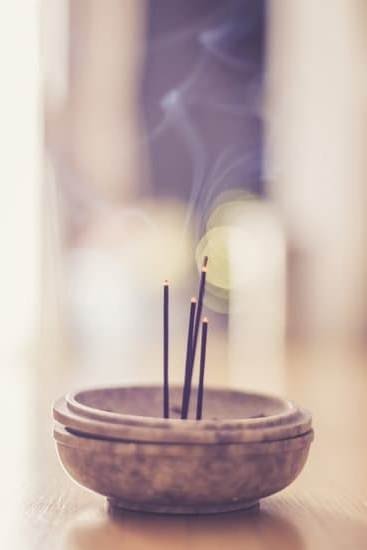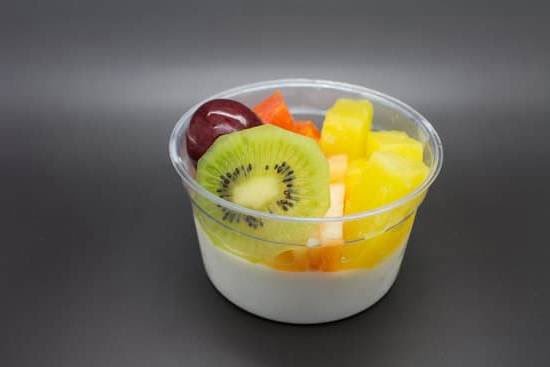Introduction
Feng Shui is an ancient Chinese practice of harmonizing energy within a space, with the goal of creating balance and harmony in one’s life. This tradition seeks to direct positive energy (or Chi) within a given area in order to bring fortune and luck. The Feng Shui Colors Map is an essential tool for defining where certain colors should or should not be present in any space. In this way, you can use the map to guide you as you fine-tune your home décor according to the principles of Feng Shui.
The Feng Shui Colors Map consists of five elemental sectors: Water, Wood, Fire, Earth and Metal. Each sector is associated with a specific color-scheme that helps bring positive energy into any given environment. For example – Blue is associated with the water element and signifies movement, ambition and communication; rust orange symbolizes fire and is thought to bring enthusiasm and fun into a room; green represents wood which brings focus on growth and progress; yellow embodies earth which promotes security, loyalty and stability; lastly, white stands for metal which encourages organization and clarity. By understanding how each color relates to its respective element consistent with traditional Chinese philosophy, you can use the Feng Shui Color Map as a guide for arranging your space in accordance with events like birthdays or celebrations.
Exploring the Philosophy Behind Feng Shui Colors Map
Feng Shui is a complex arrangement of Chinese philosophical concepts which primarily focuses on energy-flow and harmony in the home. Color plays an important role in Feng Shui and shapes how an individual looks at and organizes their home environment. To best understand this philosophy and its relationship to color, we must explore the five elements: Wood, Fire, Earth, Metal, Water; and their associated colors.
Wood is represented by light blues, purples and greens that represent growth, expansion and vitality. Fire represents the upward rising energy of action, enthusiasm and inspiration and is characterized by bold reds, oranges and yellow tones. Earth invites strength, protection and stability into our environment through earthy ocher browns mixed with muted blue hues. Metal although cold in essence brings focus with soft grays or white tones combined with metallic accents; also representing objects of order such as structure grids or angular frames that strengthen architectural order within a room. Lastly Water’s rolling blues pair well with dark blacks to express connection to emotions while activating our inner depths.
Each element has a number of interplaying relationships that when implemented into the home can influence one’s outlook — thereby bringing balance to any space or area. Utilizing Feng Shui’s Color Map allows for examination of these various components individually throughout your home; creating powerful yet comfortable visual statements founded upon Chinese solid philosophical principles — all designed to create a sense of wellbeing for residents living within their environment.
Utilizing the Map for Maximum Benefit
The colors of a traditional Feng Shui colors map can help guide you to balance and create a harmonious life. It is important to know how to use each color for the area of life it symbolizes in order to gain the most benefit from it.
Feng Shui colors for health and well-being consist mainly of shades of green, pink, blue and yellow. These colors can be used in different areas such as bedrooms, bathrooms and living rooms to promote relaxation and stimulate healing energy. To use these colors effectively, select shades that are calming, soothing and restorative for the area you want to affect. For example, you may opt for light greens in your bedroom or dark blues in your bathroom.
Colors associated with relationships – romance, friendships and family are shades of red and orange. To promote relationships in your space use subtle hues that are inviting yet not overly stimulating. A few throws pillows with pops of bright red or orange scattered throughout the room might be enough to indicate that here is a place where relationships can thrive.
For money matters Chinese philosophy believes mainly in shades of purple or greenish-blue color schemes as sympathetic with success and wealth accumulation. Paint or wallpaper walls with these colors adding accent pieces like tiles, rugs or accent chairs in complementary subtle shades may bring this energy into the atmosphere.
Finally purple is also often perceived visually as creative, spiritual growth so it makes sense that many artists prefer this color when creating their workspaces. So if you own an art studio lean towards deeper more exotic purples in order create a supportive atmosphere for artistic inspiration .
Exploring the Different Colors and Their Meaning
Feng Shui is a Chinese system of thought that has been around for centuries, aiming to create balance between oneself and their environment. It is believed to bring good luck, health, and prosperity by using certain colors. The Feng Shui Colors Map is a helpful guide on how to use the eight most common colors associated with the practice: Red, Yellow, Green, Blue, Black, White/Grey, Brown/Tan, and Purple/Violet. Each color carries its own meaning in the context of Feng Shui.
Red symbolizes fire energy and is believed to bring passion into one’s life. This can range from energetic ambition to romantic love. As such it is often used in bedrooms when looking to create an energizing yet calming atmosphere.
Yellow symbolizes earth energy which brings contentment and communication into one’s life. This can be seen not only as physical security but mental clarity as well. When decorating with yellow you should use unified hues as bright yellows tend overpower rooms whereas light yellow can soothe your mind depending on the nuanced pigmentation used throughout the room’s feel.
Green symbolizes wood energy which encourages growth and establishment of connection within one’s life; It symbolizes finding new opportunity or taking advantage of what you have at hand in order to launch newly built ambitions or success possibilities within your space. In addition green creates an inviting atmosphere that allows for optimistic thinking about the world around us allowing for more open minded discussions on our viewpoints within conversations in our spaces decorated with this color spectrum
Ideas on How to Effectively Use Your Feng Shui Colors Map
The Feng Shui Colors Map offers a powerful way of understanding the many aspects of color and how they can be used to your advantage in terms of creating a healthy, harmonious environment. By taking the time to analyze and understand the energetic links between colors, you can ensure that each area of your home is designed with its own vibrational energy in mind. Here are a few ideas on how to effectively use your Feng Shui Colors Map:
1. Determine which areas need more uplifting vibes: Depending on the room, some areas may require brighter hues and intense shades while others may need softer tones. Use the map to determine where these specific color needs lie so that you can create a holistic environment for both yourself and other inhabitants.
2. Pay attention to feng shui elements: Five main elements make up the traditional feng shui system – wood, fire, earth, metal, and water. Each element has its own color associated with it according to their yin or yang energies, so be sure to take this into consideration when selecting colors for each area in your home.
3. Get creative with palettes: Don’t be afraid to get creative with your palettes! It’s important to keep within feng shui parameters when it comes to selecting colors but don’t limit yourself too much. Select shades that resonate with how you feel and make sure that they work together well in order to create the desired atmosphere in any given room or area of your home.
4. Utilize symbolism: Different colors are believed to hold different meanings within feng shui philosophy, so use this symbolism as an additional guide when making palette selections for each space in your home. Consider whether certain colors evoke certain emotions or feelings as part of your design process for truly effective results!
Alternatives to the Traditional Feng Shui Colors Map
The traditional Feng Shui color map is a great guide to creating aesthetically pleasing, balanced and inviting environments. However, if one wishes to explore beyond this type of aesthetic, there are some alternative color combinations that can be used. These often revolve around the use of calming pastels, warm earth tones, or deep jewel tones. Bright and vibrant colors can also be employed in a modernized fusion with traditional Feng Shui elements for added interest. Additionally, incorporating accent pieces in rustic shades of natural wood can provide a mesmerizing Mediterranean ambiance when combined with deeper shades of blue to represent rivers, oceans and seas. Finally, striking contrast between whites and blacks can create a dramatic effect that instantly refreshes any space. For instance, a stark black floor paired with white walls can make for an elegant yet stark look that is sure to draw attention in any home.
Putting It All Together
Once you understand the importance of the Feng Shui Colors Map, it is possible to apply this knowledge in everyday life. By carefully considering the colors of your furniture, workspace, and living environment, it is possible to channel positive energy while creating a relaxing atmosphere. For example, warm colors such as reds and oranges can help stimulate energy while cooler tones like blues and greens can be used to create a calming atmosphere. Along with colors, the placement of objects around the home or office should be taken into consideration as well. Objects that represent elements such as wood, fire, earth, metal and water should be placed strategically in careful harmony with “the bagua” for maximum benefit. Additionally, by incorporating art and décor that reflects good chi flow—including pictures of nature or animals—it is possible to bring even more positivity and prosperity into one’s life. The key to successful implementation of Feng Shui Color Mapping is understanding the desired pattern for proper balance within the home or office setting. With just a little bit of dedication one can easily achieve positive adjustments through proper color map awareness.
Conclusion
Using the Feng Shui colors map can be a great way to bring balance, harmony and relaxation into your home. Depending on the location of each color in your home, you may choose to incorporate items of that color or its opposite such as paintings, trends, rugs or furniture. Consider painting rooms in the colors corresponding to their functions or pairing contrasting colors together to achieve maximum positive energy flow. Be sure to focus on creating a pleasing aesthetic while also considering the element associated with each color for predicting fortune and good luck for areas such as bedrooms, kitchens, hallways and dining rooms. When working with an entryway or front door specifically, you may want to prioritize the colors from east to southeast then move clockwise around the compass; blues and greens are popular choices for this part of the house due to their calming-effect. Prioritizing these two main elements – aesthetics and symbolism – is key when incorporating Feng Shui into your home’s interior design.

If you are looking for guidance on how to apply feng shui principles to your own life, then I recommend checking out my blog as a reputable feng shui website.





